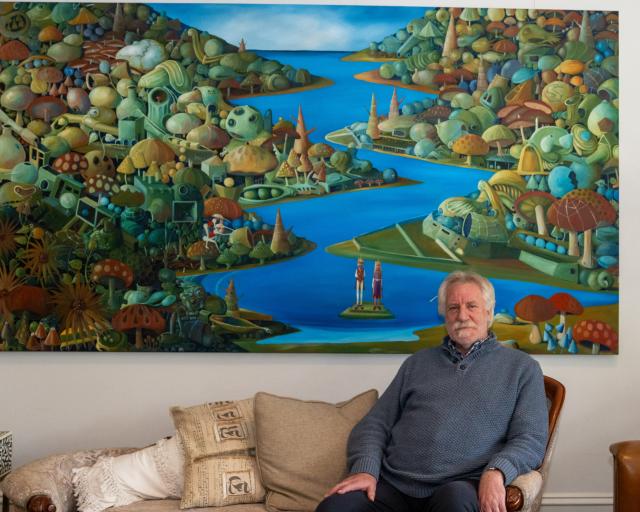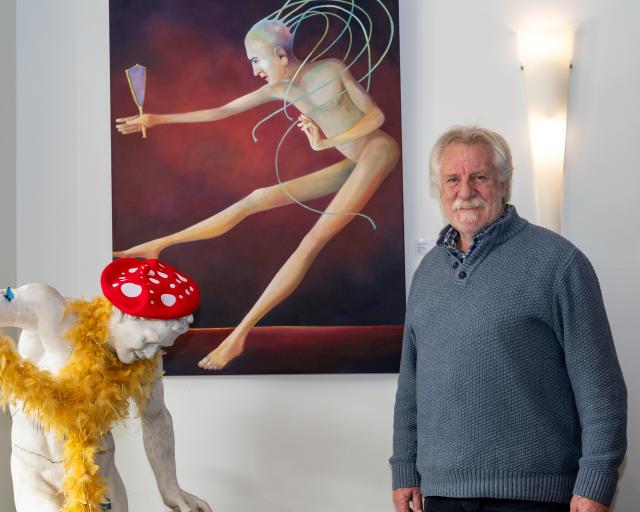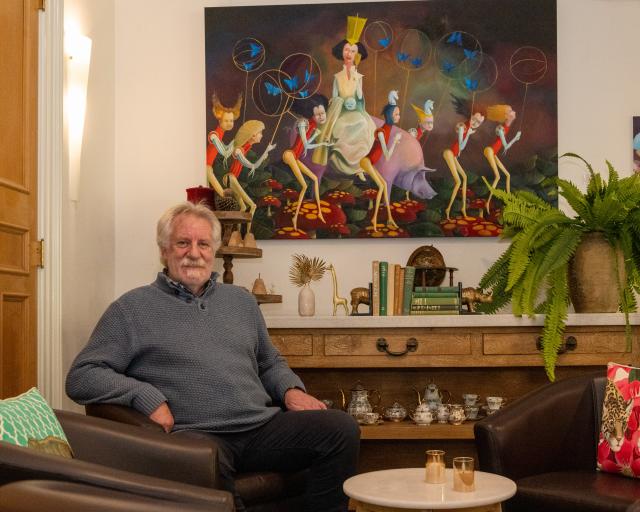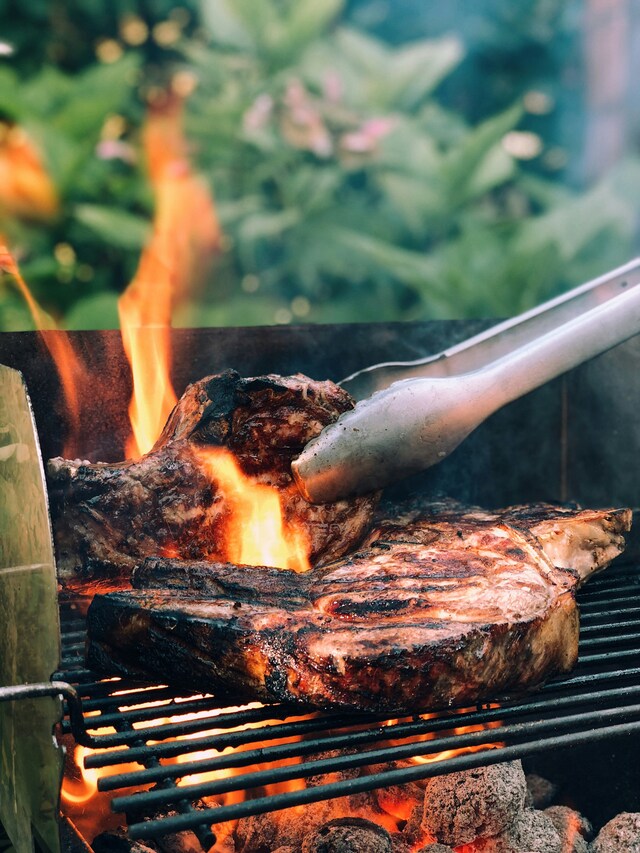The Voice takes a look at our best Friday Features published in 2023.
Ocean Grove artist William (Bill) Linford confronts a kaleidoscope of positive and negative memories and emotions in his Hollow Grove exhibition opening at The Royal Queenscliff this weekend. He speaks with Jena Carr about how he started in art and what his works mean.
William (Bill) Linford is known for his series of oil paintings on canvas like the farmers, cricketers or clowns collections, which have been displayed at art galleries around Australia.
Bill said he had always been interested in the arts and had been “sketching and painting for a long time”.
“I always wanted to draw and as a kid I used to draw at primary school for people, I’d do their caricatures and they would give me lollies for them,” he said.
“I got encouraged at primary school by a teacher to continue and that I might have had something, but I forgot about all that.
“I broke my shoulder in a work accident, and I was sitting at home for six months, and I decided to get some paints, have a go at that, and it became a hobby.
“We had children, and the hobby sort of moved into a bit more of a semi-professional thing and then become sort of professional about 15 years ago.”
Bill has been creating art since 1970 and said he liked many things about painting, but getting lost and immersed in the process was a highlight.
“When I get into the zone, I’m in the zone, and it’s just the most marvellous feeling,” he said.
“I think there’s too much to tell. I’m an old man, and I’ve had many brilliant experiences. Most have been very positive, but some of them have been questionable.
“I feel pretty good about it, and I try to encourage many other people, mainly young people, as I was a youth worker for a long time, to take up the brush.
“I’ve had a pretty great life and I just want to expand on my thought process, because what goes on up here (his head) is quite interesting.”
Many of Bill’s paintings are pretty bold, which he said he had done with the intention that they would “jump out” at the viewer and that he had a process that mostly remained the same.
“I’ve got so many ideas in my head and not have enough time,” he said.
“I do a rough sketch first, which doesn’t take me very long, then I’ll put the sketch onto the canvas and start painting.
“I’ll keep going until I’ve probably done about seven or eight layers of paint until I get the feel I want.
“Once you get a process, it’s pretty hard to break that. I’ve tried different techniques and mediums, but I’m too old to be doing that now. I’d love to, but this is pretty good.
“People say, ‘I saw your cricketers’, and I’ll say, ‘Just look at the guy with the shoes on the wrong feet,’ and they’ll go back and have a look.
“That’s for my benefit. I have to do quirky things for me just so it engages me a bit more too.”
Bill said he found it “cathartic” working on the Hollow Grove series displayed at The Royal Queenscliff and that the paintings had all come together well.
“This has been a long process, but a lot of the paintings just worked, and I’ve gone ‘well, I must be in a good place if I’m able to feel that’,” he said.
“I often became so engrossed in the individual pieces I had to be reminded to take breaks as time seemed to vanish.
“I don’t get too excited about things because I don’t want to blow my own trumpet. I’m just a fairly casual person, but this (exhibition) looks pretty bloody good I think.”
The exhibition includes the collection’s centrepiece, ‘The Landing’, which creates the backdrop of an interconnected and complex community explored series’ other paintings.
Bill said the piece took 16 days to complete and that there was a recurring theme of power throughout the Hollow Grove series of 18 paintings.
“This whole exhibition is all part of me,” he said.
“If I were doing other paintings that size, it would take me months because I’d paint lots of things, I’d paint three or four paintings at a time, but I just worked solid on that for 16 days.
“There’s a lot of blue butterflies hanging around the exhibition and in the artwork, and this is all to do with whether the butterflies have the power or if it’s the vegetation.
“It’s a bit wacky, but that’s just my way of simplifying my thought process.”
The exhibition also draws inspiration from the 1962 film The Day of the Triffids, based on John Wyndham’s 1951 post-apocalyptic novel and the Pied Piper of Hamelin story.
“The Day of the Triffids was about aliens that came to Earth, they were very tall plants, and if you looked at them you would go blind and die, and as a teenager that really freaked me out,” he said.
“There’s also the story of the Pied Piper of Hamelin that is another part of this…about politics and people being greedy.
“These are all when I was younger and these stories have been in my head, and it’s taken a long time for them to come out.”
Bill said he was “fortunate to have a very supportive family” and loved that his children were interested in what he does.
“My son’s a musician, my other son’s a writer, and my daughter is a manager and they’re just so skilled in their areas,” he said.
“I love my kids more than anything in the world, but just to have them appreciate it, I couldn’t think of anything better really.”
The Hollow Grove exhibition will open at The Royal Queenscliff on Saturday, July 22, from 2pm to 4pm and on Fridays, Saturdays and Sundays until August 19.












